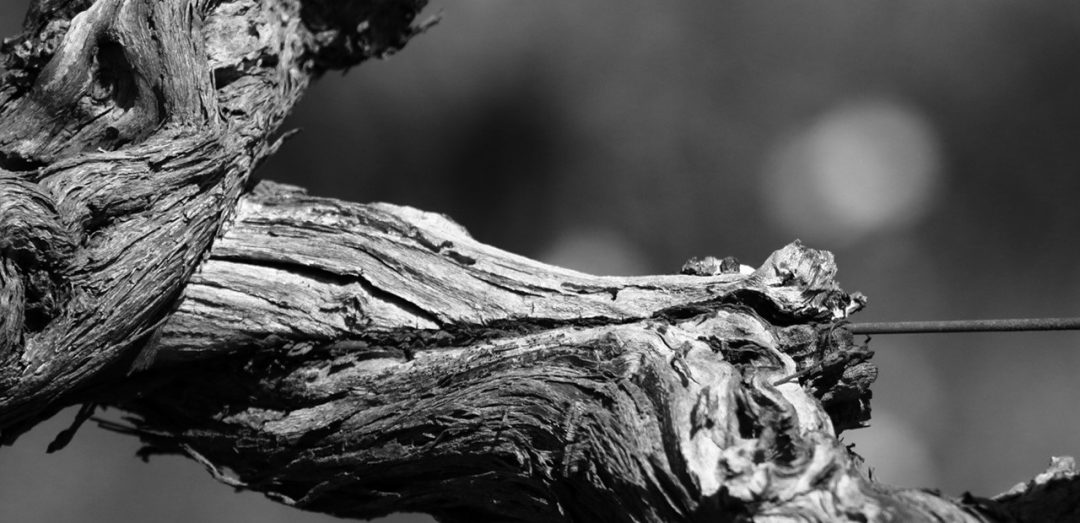Photo credit: Jim Hunneyball, Old Vine Project (South Africa)
Great wine is made in the vineyard. Ask any producer with fine wine aspirations and they will agree. A vine in balance, producing healthy, optimally ripened grapes boasting complex, concentrated flavours – this is the winemaker’s holy grail. It is for this reason that old vine vineyards are so highly prized.
Old vines is a term seen with increasing frequency on premium wine labels. While there is no legally agreed upon definition for what constitutes old vine vineyards, several wine regions have come up with their own specifications. The Barossa Valley’s Old Vine Charter separates mature vines into four categories: from “old vines” at a minimum of 35 years old, to “ancestor vines” that have surpassed the venerable age of 125.
In South Africa, an initiative called the Old Vine Project, works to classify and protect the country’s old vine vineyards. Project founder and renowned viticulturist Rosa Kruger and her team travel the country in search of old vine vineyards, convincing vineyard owners to preserve these important sites. In South Africa, like in the Barossa Valley, the minimum age for old vine status is 35 years.
“Young vines are exploring their soils as they build structure above and below the ground and this leads to more vigour – larger canopies, more shade, bigger crops and resulting wines that are often thinner and lighter in style”, explains Swartland wine producer Chris Mullineux. “Old vines on the other hand tend to be in better natural balance. The yields are generally lower and the resultant wine has more texture and intensity without having to pick riper or aim for extraction in the cellar”.
Rosa Kruger agrees. She firmly believes that, “age in vines brings an intensity, a perceived freshness, a texture, and a sense of place”. Old vines have a deeper, more developed root system – up to 30% according to Kruger – giving them better nutrient and water reserves, and far greater adaptability to climatic variations. They show far less vintage variation than their younger counterparts.
Old vine vineyards are an important aspect of a wine region’s heritage. In certain sectors they prove a treasure trove of lost or forgotten grape varieties. Vineyards that predate the rise of clonal selections in the 1970s offer important genetic biodiversity. The fear that Spain is losing its old vine vineyards drove Aragon wine producer Fernando Mora MW to set up “save the old vines” an association with ambitions to register and conserve older vineyard plots.
There are many reasons why old vines are in short supply in many of the world’s vineyards. Growers are often paid based on the tonnage and sugar ripeness of their crop. Younger vines generally produce more plentiful crop loads and are thus more profitable, leading to uprooting of older, lower yielding vines. Vineyards are also regularly beset by pests, viruses, fungal infections, extreme weather events and other factors that can damage the vines, shortening their lifespan.
The South African Old Vine Project places great emphasis on caring for younger vines to ensure a healthy and productive old age. To this end, they are developing a second classification to register and monitor 25 year old vines, with the aim of increasing their likelihood of achieving old vine status. Perhaps the most important idea the group espouses however, is the notion of “planting to grow old”; encouraging growers to ensure they are planting clean, virus-free vine materials.
This sentiment is echoed by French nursery man Lilian Bérillon. In the late 1990s, Bérillon found himself increasingly alarmed at the rampant disease and mortality rate in French vineyards. This led him to launch a self-proclaimed “new grapevine nursery model” in 2005. Bérillon’s approach focuses on massal selections, biodynamic practices in the propagation of his cuttings, and rigorous sorting of newly grafted plants, keeping only plants exhibiting a strong graft union and healthy root system. To ensure his new plants are free from all pests, Bérillon submits them to a laborious hot water treatment prior to sale.
Bérillon’s driving principle is simple. The only way to achieve a healthy, sustainable vineyard capable of growing old and producing high quality wines is to start with a solid foundation; namely clean, robust, genetically diverse planting material.
From the preparation of soils, to the planting of clean plant materials well suited to the site, to the meticulous care required each and every growing season, achieving healthy, old vine vineyards is no easy feat. And yet, the advantages in terms of sustainability, biodiversity, and preserving vineyard heritage are undeniable. For quality minded wine producers, the uniquely complex, characterful wines derived from old vine vineyards are ample proof of their importance.

